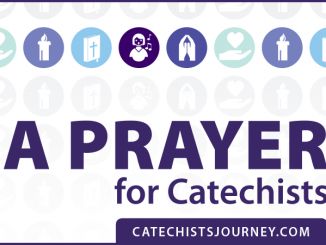
I recently attended a marketing conference, and the workshops on writing effective e-mails and storytelling had lessons applicable to our work as catechists.
Have a clear call to action.
This reminds me of what Joe Paprocki says about the big idea in a lesson—have the goal in mind from the start. Knowing what action we want young people to take as a result of the lesson helps us to plan activities that take them from walking in the door to walking one more step on the journey of discipleship.
Present a concise message.
In others words, get to the point! As John Barone points out in The Adaptive Teacher, “the more words we use, the harder it is for students to understand, remember, and follow our instructions—particularly for students with neurological differences whose deficits in processing speeds, attention, and working memory may make it even harder to retain and implement information.” An effective teacher can self-edit to make the point concisely in a way children can understand. And beyond helping understanding, using fewer words means more time is available for activities that help drive home the message in ways that can reach students with multiple learning styles.
Tell a story.
While this may seem somewhat to contradict the above point, a good story does not use extraneous words to make its point or set the scene. There is nothing wrong with descriptive language in the service of the story, and stories can touch the heart in ways lecture and conversation can’t. Remember, Jesus was a master storyteller who used parables to convey deeper lessons.
Meet them where they are.
In the context of marketing, we are reminded that not every media platform is the same. Think of the differences between Facebook and LinkedIn, Instagram and Twitter. Audiences use these social media tools for different purposes, with some more visual than others and some more for talking with acquaintances and others for sharing with closer friends or business contacts. When marketers keep the audience and their reason for coming in mind, they can more effectively match messages to potential customers. Similarly, we catechists must keep in mind that young people come to us with a variety of backgrounds. We must meet people where they are and choose appropriate methods of formation accordingly.
Which of these lessons speaks to you most at this point in your life as a catechist?
Image by StartupStockPhotos via Pixabay.





Be the first to comment